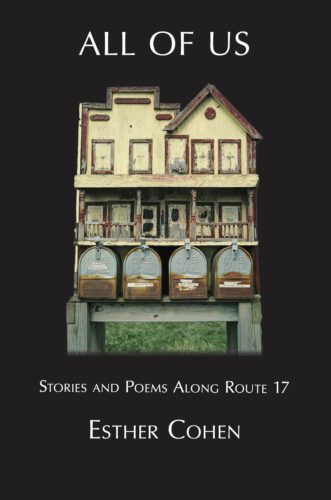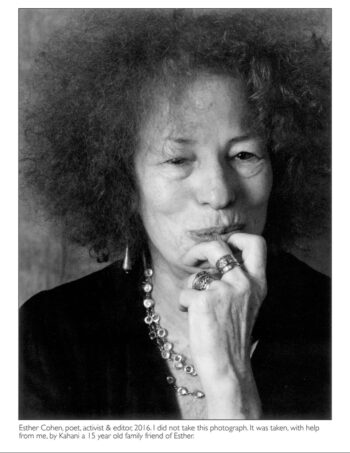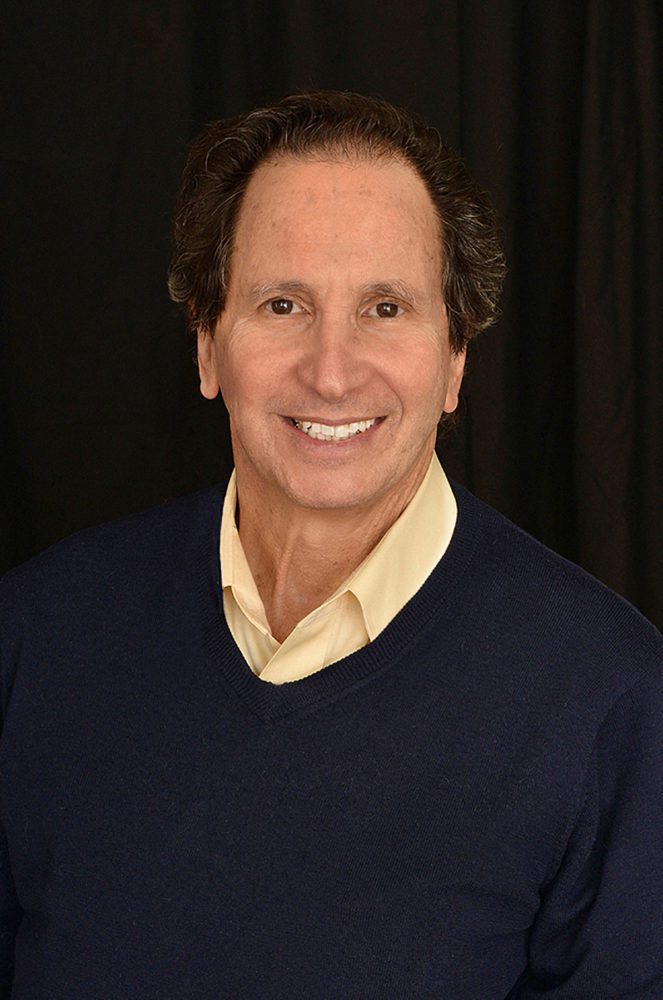Review of a New Book by Esther Cohen
Poetry of Everyday Life Blogpost #24
Produced in collaboration with Voices: Journal of New York Folklore
 All of Us: Stories and Poems Along Route17 is set in Middlefield, a mythical town in the Catskills, New York. It’s one of those villages with “real families, messy, earning some kind of living or trying to.”
All of Us: Stories and Poems Along Route17 is set in Middlefield, a mythical town in the Catskills, New York. It’s one of those villages with “real families, messy, earning some kind of living or trying to.”
Middlefield echoes Faulkner’s Yoknapatawpha County, his “postage stamp of native soil”; it resonates with Grover’s Corners, USA, the town in Thornton Wilder’s classic, Our Town; and evokes Spoon River, the mythical town described in a series of free verse poems, each one an epitaph of a bygone resident in Edgar Lee Master’s Spoon River Anthology.
Middlefield resembles none of those places, though it’s as universal as any of them. Author, Esther Cohen, was not raised in the town that inspired this book. She and her husband, based in New York City, bought a second home in just such a place. “I am not a country person and yet here I am,” she writes. As she revels in her perfect porch, “a treehouse / not so far above the ground,” she realizes that her neighbors are actually “her view.” Over the years, those neighbors become “a family made by place.”
Esther explains that her urge since childhood has been to “Describe What I See to Describe What I Hear / to Describe and Describe.” And describe she does. A masterful, verbal, sketch artist of people and personalities, she hones-in on the humor, pathos, and the humanity in the quotidian. There is, for instance, “Sophie, obsessive acupuncturist who insisted on carrying needles with her wherever she went.” She describes a couple: “Eddie wasn’t big,” she writes, “but his middle was. He had one of those men stomachs. Hard cannon ball. Joan had Blondie hair. It could have been spray painted onto her head. In a funny way they matched.”
Though her work is understated and her humor almost deadpan, she is capable of conveying deep emotion and spinning marvelous metaphors. There is Diana. “How sad she seems. And how little room she has for stories that aren’t her own. She still has the kind of physical grace of a woman who once danced all the time, who knew, when she was young, what it meant to glide through air, how to turn her body into a flower.” And the characters in Middlefield have plenty of sex. One poem is titled, “Of Neighbors Who Fall in Love with One Another.”
Esther doesn’t hesitate to describe herself along with the other Middlefield characters. “When I look down at my feet, I don’t like to see the same shoes on my feet every day. I don’t like the same bracelets either. My life is endless and changing.” Or to describe her family. “Our life is like a religion in a way, a religion with unwritten rules and many unspoken constraints, where abundance and humor are the golden rules…Maybe like Buddhism without the Buddhism.” 
The stories and poems in the book sound as if they might be based on authentic oral histories but they are all fictionalized. If the characters were telling their own tales they would bring them to more obvious conclusions. Esther has her own ways of framing each story. Listening to a story from one of her neighbors, she confesses that “beginnings are all I care about. Not all those inevitable endings. Which I know too well.” Each piece often leaves you hanging in a way that brings out the poetry in each story, and the story behind each poem. In All of Us, one of her characters, Irene, is slowly telling a story to her friend Martha about waiting for her would-be lover. “Get to the end,” her friend tells her.
“What happened?” Irene smiled patiently. “What’s the rush Martha?” Irene said.
-
Esther Cohen (esthercohen .com) writes, teaches, and is a cultural activist. She posts
a poem every single day at Overheardec@substack .com, perhaps owning a world’
record in that regard. She served as director of Bread and Roses, the cultural arm of
union 1199. She is the author of seven books, including Book Doctor, based, in part,
on tireless efforts to edit and encourage writers.
.






